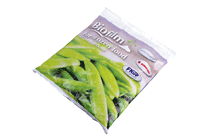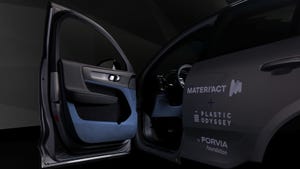Biodegradable plastics supplier FKuR claims it has introduced the first such material suitable for deep freeze packaging. A three-layer co-extrusion composed of two of FKuR's Bio-Flex biodegradable materials, both with food contact approved, is used. Film extruder and converter kobusch-sengewald and packaging machinery manufacturer Rovema were also instrumental in the development.
May 19, 2010
Biodegradable plastics supplier FKuR claims it has introduced the first such material suitable for deep freeze packaging. A three-layer co-extrusion composed of two of FKuR's Bio-Flex biodegradable materials, both with food contact approved, is used. Film extruder and converter kobusch-sengewald and packaging machinery manufacturer Rovema were also instrumental in the development.
|
Biodegradable co-extruded package meets the frozen foods challenge. |
The three-layer package is converted from film extruded from Bio-Flex F 2110 for the inner and outer layers and Bio-Flex F 2110 for the center layer. Bio-Flex F 2110 extrudes into a translucent film with said to offer good impact resistance at low temperatures, and muster mechanical characteristics similar to high-density polyethylene (HDPE). Both resins are based on a blend of polylactic acid (PLA) and other biodegradable materials. Both are compostable according to ASTM D 6400.
Bio-Flex A 4100 CL, says FKuR, is the first transparent PLA-based blend that can be converted into a commercially suitable blown film. The material is rather rigid and its mechanical characteristics are comparable to those of PP.
FKuR (Willich, Germany) was founded in 2003 but early this year expanded into the U.S. with FKuR Plastics Corp. in Cedar Park, TX. Earlier this year the company also was in the news when one of its materials was specified for molding of bases for a computer keyboard from Fujitsu on which 45% of the petroleum-based thermoplastics have been replaced by two plastics derived from renewable materials. —Matt Defosse
About the Author(s)
You May Also Like



